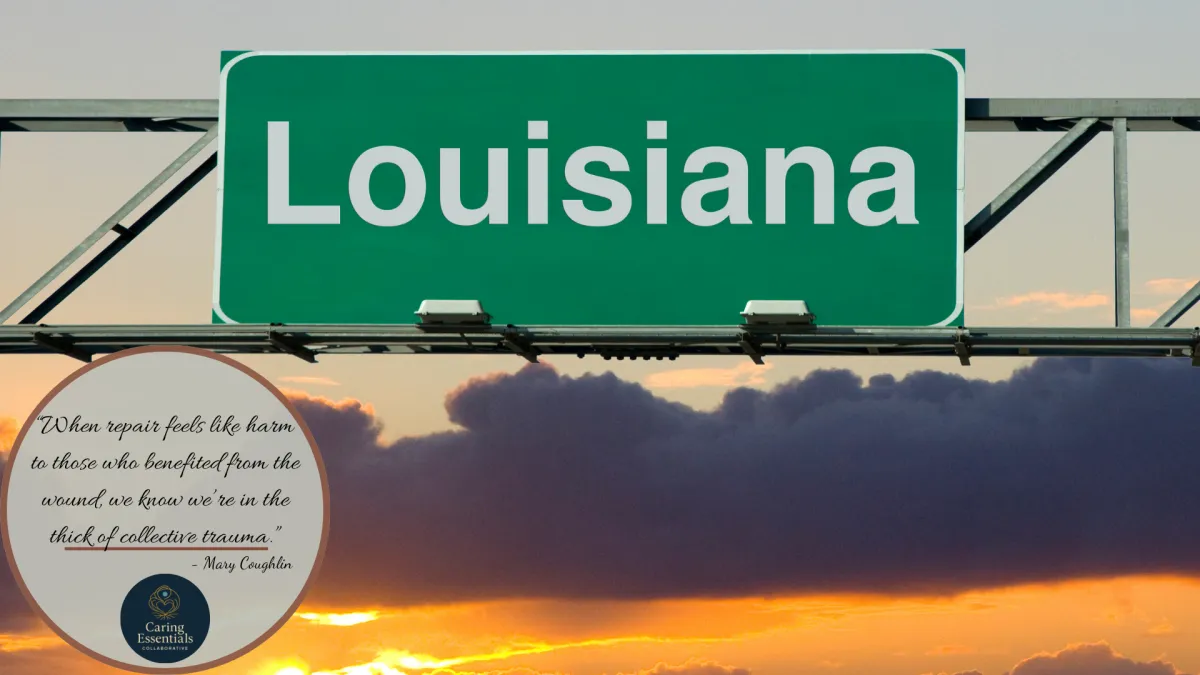
When Healing Is Called Harm: What the Fight Over the Voting Rights Act Reveals About Collective Trauma
“When repair feels like harm to those who benefited from the wound, we know we’re in the thick of collective trauma.” - Mary Coughlin
When Healing Is Called Harm: What the Fight Over the Voting Rights Act Reveals About Collective Trauma
In trauma-informed care, we understand that healing begins with truth-telling — with naming what’s been broken and daring to imagine what wholeness could look like. But what happens when repair itself is branded as harm?
That’s the paradox now playing out in Louisiana v. Callais, a Supreme Court case that asks whether lawmakers went “too far” in considering race while redrawing congressional districts. The irony is staggering: the Voting Rights Act of 1965, a law written to end racial exclusion, is being challenged in the name of “colorblind fairness.”
Once again, America’s nervous system is showing signs of dysregulation.
The Legal Surface, the Emotional Undercurrent
On paper, this case is about maps and demographics. In reality, it’s about memory and meaning.
For generations, Black voters in Louisiana have been systematically under-represented. A federal court ordered the creation of a second majority-Black district to comply with the Voting Rights Act — a small act of repair.
But when the Legislature followed that order, white voters sued, claiming the new map discriminated against them. In legal terms, they argued that “race predominated.”
In trauma terms, this is reenactment. A system that once used race to exclude now punishes efforts to include — proof that unhealed trauma finds new ways to repeat itself.
A Trauma-Informed Reading
Trauma isn’t just what happens to people, it’s what happens inside systems that refuse to face pain.
A trauma-informed lens reveals three layers beneath the legal briefs:
Historical Trauma – Centuries of racial disenfranchisement leave a body politic still primed for defense.
Moral Injury – For those who believe in fairness, watching repair be reframed as harm evokes a deep, moral ache.
Collective Dysregulation – The national nervous system toggles between hypervigilance (fear of losing power) and numbing (denial of harm).
When a society confuses accountability with attack, it’s a sign we are still living from the wound.
What Healing Requires
Healing, whether in a NICU or a nation, asks the same things:
Truth before tranquility.
Repair before reconciliation.
Safety before silence.
A trauma-informed democracy doesn’t ignore race; it honors how race has shaped belonging, safety, and access to power. It listens to those who’ve been silenced and shares the microphone. It doesn’t call equity “prejudice” or reframe inclusion as injury.
Healing is never comfortable, especially for those who benefited from the harm. But discomfort is not the same as danger. It’s the body and the body politic waking up.
Closing Reflection
“Trauma doesn’t vanish when we stop naming it. It hides in our laws, our language, our politics — until someone calls it out with compassion.”
We are living in a time when the very act of mending is being mistranslated as attack. But those who know trauma-informed care know better: when repair feels like harm, it’s a sure sign the healing has begun.
Take care and care well,
Mary
